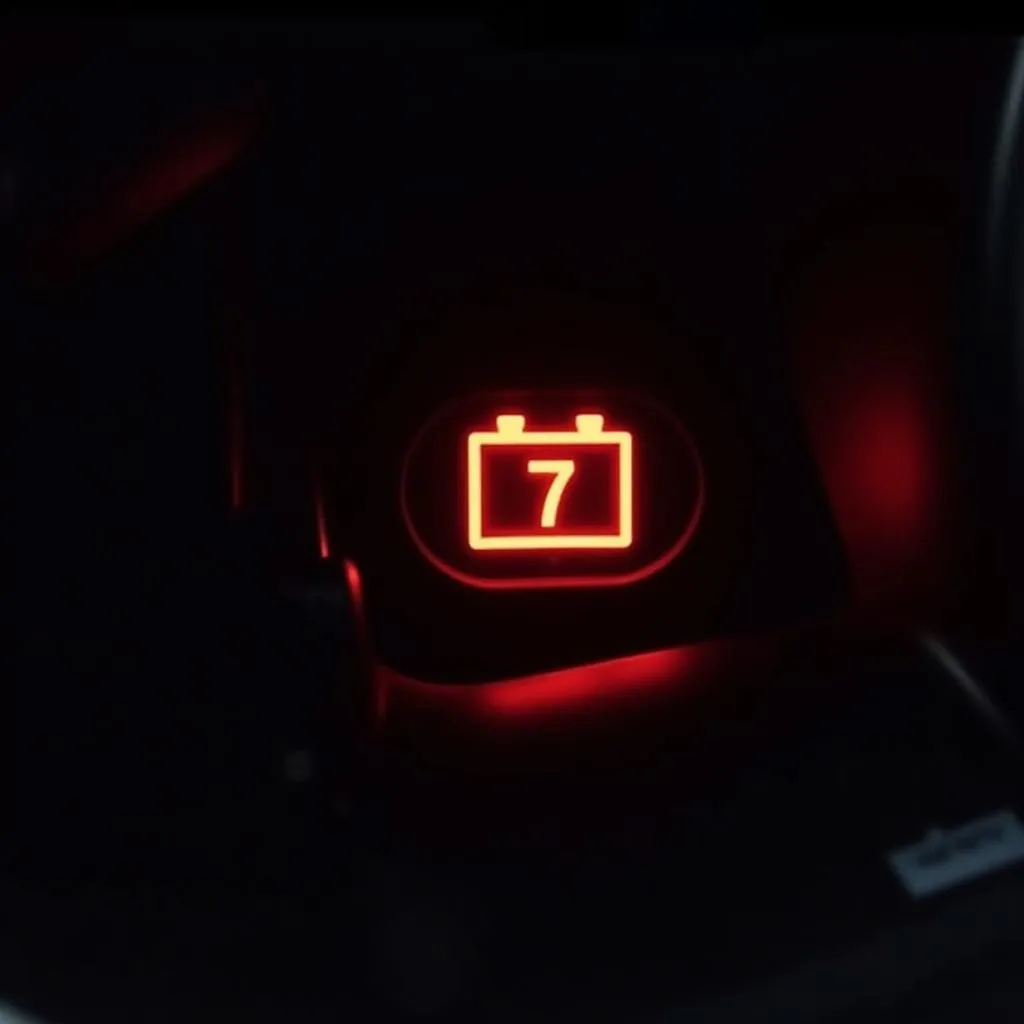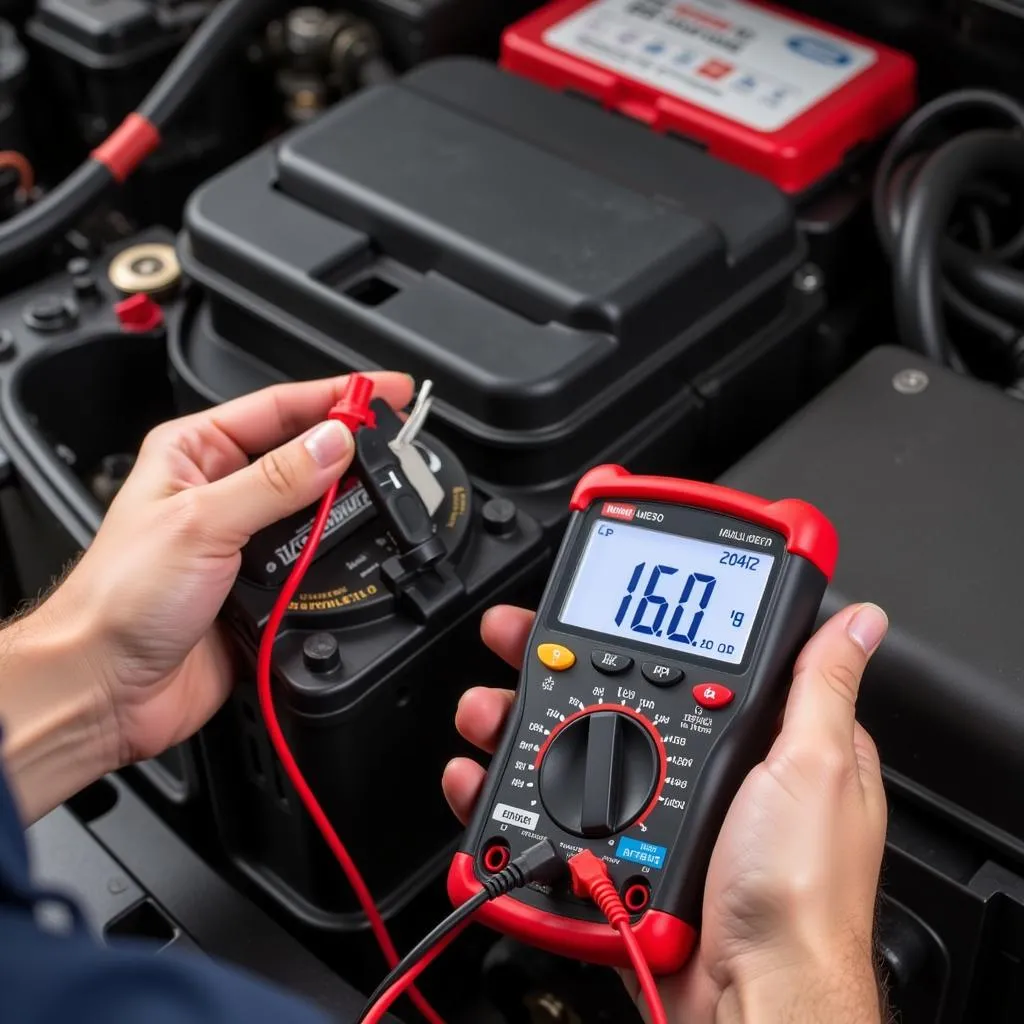Is your car struggling to start, or are your headlights dimming? These are telltale signs of a problem with your car’s electrical system, and it often boils down to two culprits: the alternator or the battery. But how do you know which one is the issue? This comprehensive guide will walk you through the ins and outs of identifying whether it’s an alternator or battery problem, empowering you to get back on the road with confidence.
Understanding the Roles of Battery and Alternator
Before we delve into the diagnostics, let’s clarify the roles of each component:
- Battery: The battery is your car’s powerhouse when the engine is off. It stores electrical energy and provides the initial jolt needed to crank the starter motor and bring your engine to life.
- Alternator: Once the engine is running, the alternator takes center stage. This belt-driven component acts like a generator, constantly recharging the battery and powering all the electrical accessories while you drive.
Think of it this way: the battery is like a well holding a reserve of water (electricity), and the alternator is the pump that replenishes the well while also supplying water for immediate use.
Signs It Might Be Your Alternator
A failing alternator often announces itself through several symptoms:
- Dimming or Flickering Lights: A struggling alternator can cause your headlights, interior lights, or dashboard lights to dim or flicker, especially when you rev the engine.
- Warning Light on Dashboard: The battery warning light (usually a battery icon) illuminating on your dashboard is a strong indicator of charging system issues, often pointing to a faulty alternator.
- Weak or Dead Battery: Since the alternator recharges the battery, a bad alternator will eventually lead to a drained battery, making it difficult or impossible to start your car.
- Whining or Growling Noise: A worn-out alternator bearing can produce a whining or growling sound, which typically gets louder as the engine speed increases.
- Electrical Malfunctions: Problems with power windows, radio, or other electrical accessories can also stem from a failing alternator unable to provide sufficient power.
 Car dashboard with alternator warning light illuminated
Car dashboard with alternator warning light illuminated
Signs It Might Be Your Battery
On the other hand, a failing battery often exhibits these symptoms:
- Slow Engine Crank: If your engine cranks slowly when you turn the key, it could indicate a weak battery struggling to supply enough power to the starter motor.
- Clicking Sound When Starting: A rapid clicking sound when you turn the key but the engine doesn’t turn over usually points to a severely drained or dead battery.
- Swollen Battery Case: A battery case that appears swollen or bulging is a sign of internal damage and requires immediate replacement.
- Old Battery Age: Car batteries have a limited lifespan, typically around 3-5 years. If your battery is approaching or exceeding its expected lifespan, it’s more susceptible to failure.
How to Pinpoint the Culprit
While the above symptoms offer valuable clues, here are some additional tests to help you pinpoint the root cause:
1. Jump-Starting Your Car:
- If your car starts after a jump start but dies shortly after removing the jumper cables, it strongly suggests a bad alternator unable to keep the battery charged.
- If the car starts and continues running normally, it leans towards a dead battery that simply needed a boost.
2. Testing the Battery Voltage:
- Use a multimeter to check the battery voltage with the engine off. A fully charged battery should read around 12.6 volts.
- A reading below 12.4 volts indicates a discharged battery, while anything below 12 volts signals a severely discharged or faulty battery.
 Mechanic using multimeter to test car battery voltage
Mechanic using multimeter to test car battery voltage
3. Testing the Alternator Output:
- With the engine running, use the multimeter to check the voltage across the battery terminals again.
- A healthy alternator should charge the battery at around 13.5 to 14.5 volts.
- A reading outside this range suggests an alternator problem.
4. Inspecting the Alternator Belt:
- Visually inspect the alternator belt for cracks, fraying, or looseness.
- A worn or loose belt can prevent the alternator from spinning properly, leading to charging issues.
When in Doubt, Consult a Professional
If you’re unsure about your diagnosis or uncomfortable performing these tests, it’s always best to consult a qualified mechanic. They have the experience and tools to accurately diagnose and address any alternator or battery issues.
Pro Tip from John Miller, ASE Certified Master Technician:
“A common misconception is that a jump start will fix a bad alternator. Remember, jump-starting just gives your battery a temporary boost. If the alternator isn’t working correctly, your battery won’t stay charged, and you’ll soon be stranded again.”
Conclusion
Knowing how to tell if it’s your alternator or battery acting up is essential for maintaining your car’s health and avoiding unexpected breakdowns. By understanding the symptoms and following the simple tests outlined above, you can take charge of your car’s electrical system and make informed decisions about repairs.
Remember, a properly functioning electrical system ensures your car starts reliably and all your electrical components operate smoothly. For any further assistance or to delve deeper into specific alternator or battery issues, explore our related articles: alternator issues, how do you know if its the starter or alternator, bad battery or bad alternator.